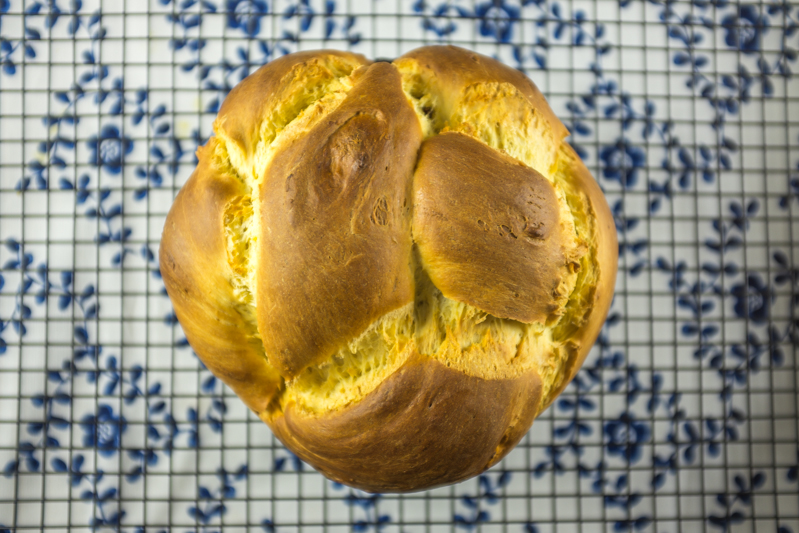This recipe for Macedonian/Greek Easter Bread is a tradition that Lauren and I have both grown up with. With each new generation descended from immigrants, the culture, language and general link to the original immigrant culture weakens. One thing which tends to remain strong however is the link to the food, with recipes being passed from one generation to the next.
Macedonians call it Kozinjak, Greeks call it Tsoureki, Lauren and I call it Yellow Bread and Jewish people will recognise the very close similarities to Challah. Whatever you want to call it, it’s a delicious sweet bread that’s found on the tables of Macedonian and Greek families all over the world on Orthodox Easter Sunday, when lent is over and the fasting gives way to feasting.
If you want to experience a piece of this tradition in your own home and a taste of our grandparent’s house at Easter (Orthodox Easter is this weekend) then here’s the recipe. Trust me, you won’t be disappointed.

Preparation Time: 20 minutes / Cooking Time: 55 minutes + 1.5 hours for the dough to rise / Serves 8-10
Ingredients
- 250ml full cream milk
- 30g fresh yeast or 14g dried yeast
- 500g plain flour, sifted
- 50g plain flour for kneading
- 3 eggs
- 75ml rice bran or vegetable oil
- 1 vanilla bean
- zest of 1 lemon
- zest of 1 orange
- 125g caster sugar
- juice of half a lemon
- 3 drops yellow food colouring (optional)
- 100g sultanas
- 5ml milk to brush the top of the dough
- 20g sesame seeds
Method
- Warm half of the milk in the microwave for 30 seconds.
- Add the yeast, 1 tsp (15g) of flour, 1 tsp (15g) of sugar and the warmed milk into a bowl.
- Stir well and set aside in a warm place for 10 minutes.
- In a separate bowl, combine the remaining milk, eggs, lemon zest, orange zest, lemon juice, oil and yellow food colouring. Mix well.
- Place the sugar, flour and sultanas in a bowl. Make a well in the centre and pour in the yeast mixture and the egg/milk mixture.
- Mix well until all of the ingredients are combined well.
- Sprinkle flour onto your work surface.
- Place the dough onto the floured bench and knead for 5 to 10 minutes
- Place the dough into a bowl, cover with a tea towel and leave it to rise in a warm area for 1 hour.
- After an hour rising, divide the dough into three equal portions.
- Roll each portion into long sausage shapes
- Join all three portions at one end and plait the dough (same action as when you plait/braid hair).
- Join both ends of the plait together.
- Transfer the dough into a greased 22cm cake tin.
- Cover the dough with a tea towel and leave it to rise for 30 minutes.
- Preheat your oven to 200°C fan forced.
- After the dough has risen, lightly brush milk on the top of the dough.
- Place the dough in the oven for 10 minutes then decrease the temperature to 180°C fan forced.
- After a further 10 minutes reduce to 160°C fan forced and bake for 35 minutes.
- Remove from the oven and transfer to a cooling rack.
- Sprinkle with sesame seeds.
- Serve warm with butter.
Notes
The sultanas and sesame seeds are traditionally included, but the bread is still very tasty without them.
Just like any bread recipe, any amount of extra flour or water/milk you need to add to the recipe will vary slightly depending on the humidity.
If you want to mix things up, you can try a few different things. For example, we have a friend who is allergic to oranges so tried it without oranges once and it still tasted really nice. Another thing we have done is to serve it with quince jam, replacing the sultanas with Inca berries. It’s a great bread base to play around with.

